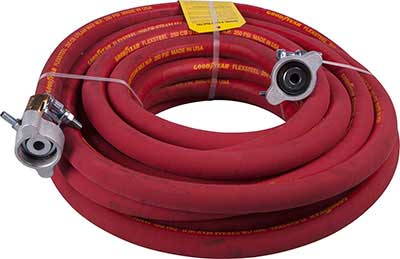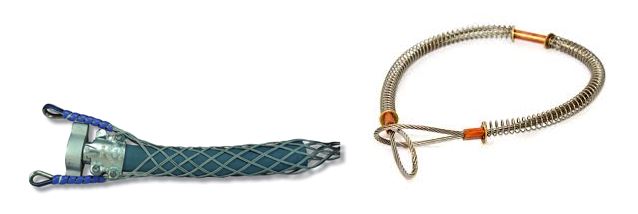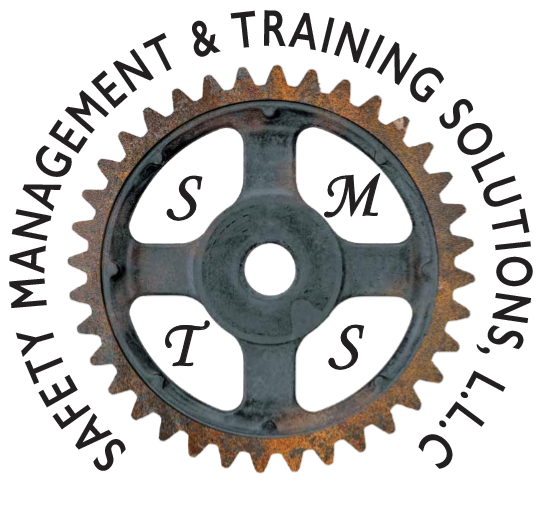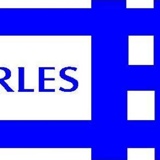Information
-
Item Description
-
Serial No.
-
Steam Hose allocated to which Location / Truck
-
Conducted on
-
Last Inspection Carried Out
-
Was the last inspection completed within the last 3 months?
-
Prepared by
-
Location
-
Other personnel undertaking the inspection.
Steam Hose
-
This section of the inspection is used to check the steam hose to ensure that all details are correct and that it is in good condition with no damage requiring it to be removed from service.
-
Add a photo of the Steam Hose being inspected.
Steam Hose Specifics
-
Manufacturer of steam hose
-
Part or Model Number (if marked)
-
How long is the Steam Hose?
-
Is the Steam Hose tagged and the tag readable?
-
Add a photo of the tag.
Steam Hose Condition
-
Is there any blistering present along the hose? (Include photos of any issues found)
-
The hose must not be used. Tag it out of service and it will need to be returned to the maintenance department.
-
Are there any cracks, cuts, gouges, worn spots or any other condition that has exposed the hose braid / reinforcement. (include photos of any issues found)
-
The hose must not be used. Tag it out of service and it will need to be returned to the maintenance department.
-
Does any of the hose show signs of kinking, bulges, soft spots or flattening? (include photos of any issues found)
-
The hose must not be used. Tag it out of service and it will need to be returned to the maintenance department.
-
Using a flashlight inspect the ends of the hose. Can you see any evidence of blisters, carcass separation, cracks, excessive wear or swelling? (Include photos of any issues found)
-
The hose must not be used. Tag it out of service and it will need to be returned to the maintenance department.
-
Is there any significant damage around the hose fittings such as splits, inner braid damage / showing, kinking or holes? (Include photos of any issues found)
-
The hose must not be used. Tag it out of service and it will need to be returned to the maintenance department.
Fittings and Whip Checks
Fittings
-
This section is used to check the fittings of the steam hose.
-
Are the fittings / couplings or their parts cracked or showing signs of significant damage that could affect their performance? (Include photos of any issues found)
-
The hose must not be used. Tag it out of service and it will need to be returned to the maintenance department.
-
Are the fittings corroded or rusting? (Include photos of any issues found)
-
The hose must not be used. Tag it out of service and it will need to be returned to the maintenance department.
-
Are the fittings loose or slipping on the hose? (Include photos of any issues found)
-
The hose must not be used. Tighten up the fittings, if this does not correct the issue then tag it out of service and it will need to be returned to the maintenance department.
-
Have the fittings caused significant damage to the hose, e.g. splitting, tearing it? (Include photos of any issues found)
-
The hose must not be used. Tag it out of service and it will need to be returned to the maintenance department.
Whip Checks / Socks
-
This section is used to check the condition of the safety device being utilised to secure the hose(s). This will either be in the form of a whip check or a whip sock.
-
What type of system is being used for this hose?
-
If a whip check is being used, is it available with the hose for inspecting?
-
Answer N/A to the next few questions.
-
Is the whip check / sock in good condition? Are there any splits in the metal banding or significant damage? (Include photos of any issues found)
-
If a whip check, then do not use it. Tag it out of service and find a replacement.
If it is a whip sock then the hose will need to be tagged out of service and returned to maintenance. -
Are the any sharp edges or points? (Include photos of any issues found)
-
If the whip check, then do not use it. Tag it out of service and find a replacement.
If it is a whip sock then the hose will need to be tagged out of service and returned to maintenance. -
Is the whip check / sock corroded? (Include photos of any issues found)
-
If the whip check, then do not use it. Tag it out of service and find a replacement.
If it is a whip sock then the hose will need to be tagged out of service and returned to maintenance. -
Are the eyelets in good condition? (Include photos of any issues found)
-
If a whip check, then do not use it. Tag it out of service and find a replacement.
If it is a whip sock then the hose will need to be tagged out of service and returned to maintenance. -
If using a whip sock are the d-rings for connecting and joining them in place and in good condition? (Include photos of any issues found)
-
If none are with the whip sock then some will need to be found and used. If none can be found then the hose cannot be used and will need to be tagged out of service until some are found.
If they are damaged then they will need to be replaced. Once again, if replacements are not available then the hose cannot be used until replacements are found / organised.
Final Appraisal
Action to be taken based on this inspection
-
Action to be taken
Overall PASS or FAIL
-
Based on this inspection what is the overall result?
Sign Off
-
Signature of the person finalising the inspection and its result.













